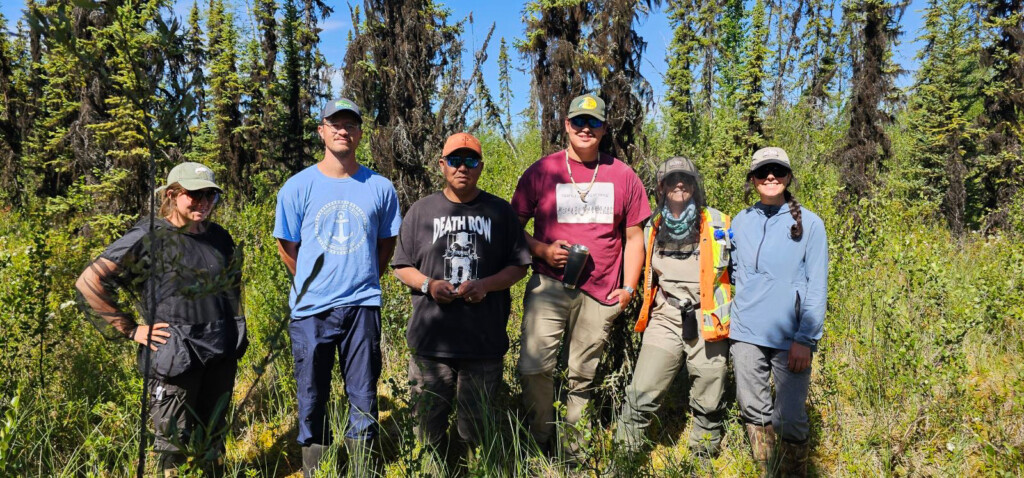Over the past three years, the B.C. Wildlife Federation’s Wetland Ecosystem Services Protocol (WESP) initiative has achieved remarkable milestones, setting the groundwork for a standardized approach to conserving wetlands in British Columbia.
The WESP tool, originally developed by Dr. Paul Adamus, aims to provide a standardized method for assessing the critical functions and values of wetlands, addressing a key gap for land managers and decision-makers who currently lack consistent measures to evaluate these ecosystems. Specific goals of the WESP tool include:
- Identifying and measuring the functional attributes of wetlands
- Highlighting areas requiring protection, restoration, or mitigation
- Informing policy development to strengthen wetland conservation
Since the inception of WESP in 2021, our team has assessed a total of 340 wetland sites across nearly five of eight ecoregions in British Columbia.
Sites Assessed:
- 2022: 63 sites
- 2023: 131 sites
- 2024: 146 sites
To be functional, the WESP tool must be calibrated across all eight ecoprovinces of British Columbia, each defined by unique climate, geological history, and ecological features. This pan-province approach ensures that the tool captures the diversity and complexity of B.C.’s wetlands, creating a robust framework for their long-term conservation.
Progress to date has been made in the following ecoprovinces:
- Completed Ecoprovinces: Sub-Boreal Interior, Boreal Taiga Plains, Southern Interior Mountain, and Georgia Depression
- In Progress: Southern Interior (near completion)
- Upcoming: Central Interior and Northern Boreal Mountains (scheduled for next year)
- Remaining: Coast & Mountain

WESP in 2024
In 2024, the BCWF and First Nations partners focused on completing (or nearly completing) assessments in the Sub-Boreal Interior and Southern Interior ecoprovinces.
- Sub-Boreal Interior: BCWF’s Katarina Sofos and Nadia Pagliaro collaborated with the Lheidli T’enneh, Saik’uz, Binche Whut’en, and Tl’azt’en First Nations.
- Southern Interior: Kyla Rushton and Spencer Haakman partnered with the Okanagan Indian Band, Okanagan Nation Alliance, Simpcw Resources Group, Tsal’alh First Nation, Nooaitch First Nation, and Lower Nicola Indian Band.
Field crews visited both backcountry and urban wetland sites in these regions of British Columbia, collecting data to assess the ecological services provided by wetlands.
Partnerships and Cultural Contributions
Developing partnerships and training First Nations on how to use the WESP tool are essential for the tool’s development and the eventual protection of these lands. Indigenous communities involved have added significant cultural value to the work while helping BCWF navigate their territories.
“The cultural significance of the north, rooted in generations of traditional Indigenous land use practices, has added much depth to our work,” says Katarina Sofos. “First Nations partners contribute centuries of ecological knowledge to the WESP process, helping to guide conservation strategies by highlighting areas of environmental and cultural significance.”

Progress and Funding for WESP
WESP’s progress to date has been supported by British Columbia’s Watershed Security Fund, which has allowed BCWF and its partners to achieve nearly half of their goals. However, completing this ambitious project requires sustained long-term investment. Without it, the potential of this transformative tool may remain unrealized, risking inconsistencies in wetland conservation across the province.
Northern wetlands, for example, serve as vital carbon stores, biodiversity hubs, and water purifiers, yet they face increasing threats from industrial activity and climate change.
By securing ongoing funding, BCWF can ensure the successful completion of WESP and its integration into policy and land management practices, safeguarding wetlands for future generations.
Learning from Other Jurisdictions: Alberta and Ontario
WESP’s development builds on lessons learned from similar initiatives in other provinces, such as Alberta’s Wetland Rapid Evaluation Tool – Actual (ABWRET-A) Guide and the Ontario Wetland Evaluation System (OWES). These tools have set benchmarks for assessing and managing wetland functions, offering valuable insights for B.C.’s approach.
Alberta Wetland Rapid Evaluation Tool – Actual (ABWRET-A) Guide
ABWRET-A was developed in Alberta and based on the models developed by Dr. Paul Adamus. ABWRET-A evaluates the natural functions of wetlands in Alberta through field observations and spatial data. This tool:
- Determines wetlands’ regulatory value based on ecological functions.
- Supports Alberta’s Wetland Policy by calculating replacement costs for impacted wetlands.
- Is a mandatory requirement for Water Act approvals for wetlands that will be permanently impacted.
Ontario’s Wetland Evaluation System (OWES)
Established in 1983 by the Ontario Ministry of Natural Resources and Forestry, OWES assesses wetlands based on several characteristics. Key aspects include:
- Using biological, social, hydrological, and special components to evaluate features such as ecological importance, societal benefits, and rare species protection.
- Assigning scores to determine “Significant” wetlands.
- Supporting the designation and protection of critical wetland areas.
Both ABWRET-A and OWES have demonstrated the value of standardized wetland assessment tools. With the development of WESP, the BCWF’s Watershed Team is optimistic that—once completed—this tool will similarly provide regulatory and conservation benefits for B.C.
Resources
Learn more about the WESP initiative: Wetland Ecosystem Services Protocol – BCWF Watershed Team
Learn more about ABWRET: Alberta Wetland Policy Implementation
Learn more about OWES: Ontario Wetland Evaluation System
Thank you to the Province of B.C.’s Watershed Security Fund for supporting this work.
